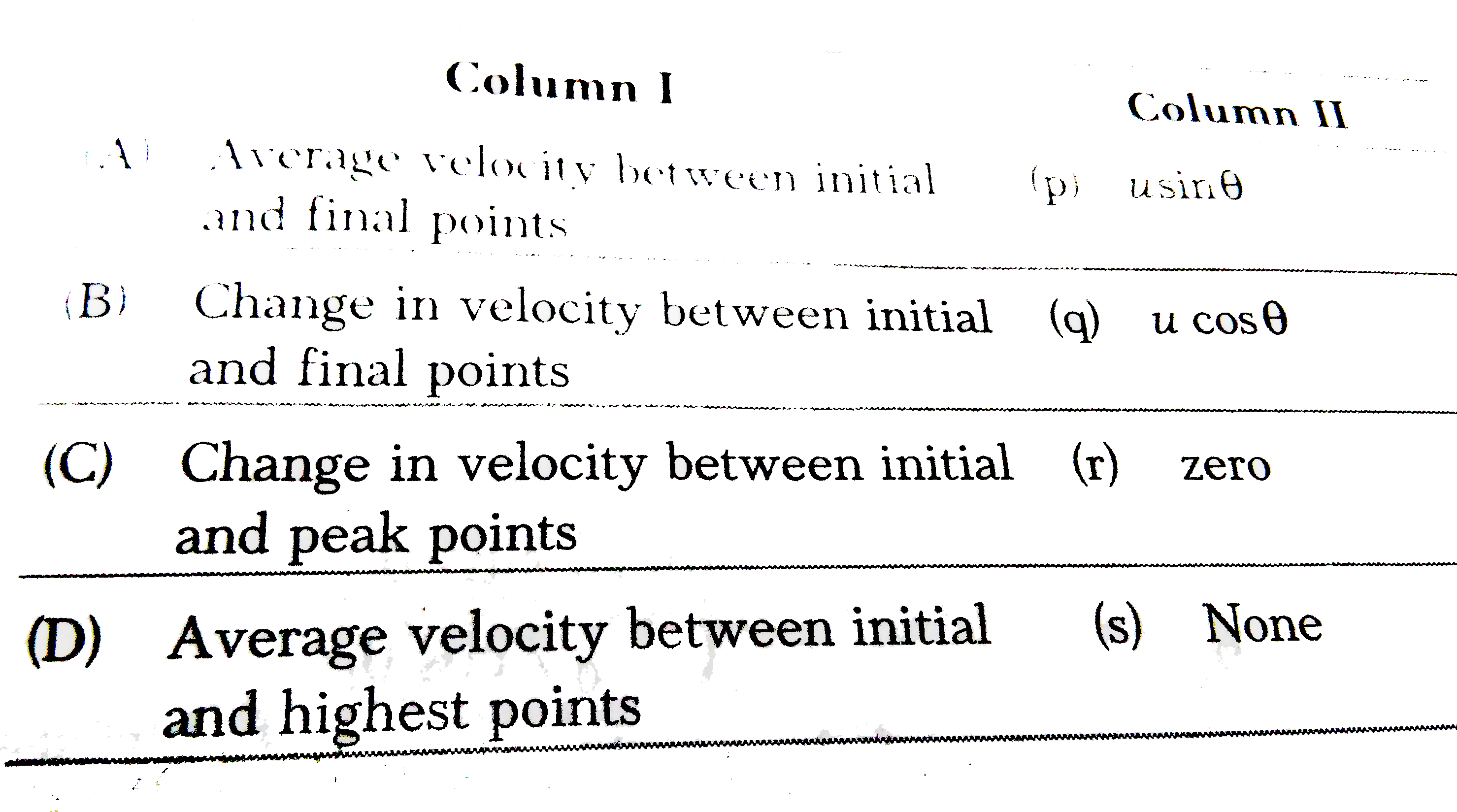A particle is acted simultaneously by mutually perpendicular simple harmonic motion x=acosωt and y=asinωt. The frequency of motion of the particle will be
If both Asseration and Reason are correct and Reason is the correct explanation of Assertion
If both Assertion and Reason are correct but Reason is not the correct explanation of Assertion
If Assertion is true but Reason is false
If Assertion is false but Reason is true
The correct Answer is:D
Step by step video, text & image solution for A particle is acted simultaneously by mutually perpendicular simple harmonic motion x = a cos omega t and y= a sin omega t. The frequency of motion of the particle will be by Physics experts to help you in doubts & scoring excellent marks in Class 11 exams.
Updated on:21/07/2023Topper's Solved these Questions
- MOTIONBook:DC PANDEYChapter:MOTIONExercise:Match the Columns
Explore 4 Videos
- MOTIONBook:DC PANDEYChapter:MOTIONExercise:C. Medical entrances gallery
Explore 1 Video
- MOTIONBook:DC PANDEYChapter:MOTIONExercise:B. Medical entrance
Explore 1 Video
- MEASUREMENT AND ERRORSBook:DC PANDEYChapter:MEASUREMENT AND ERRORSExercise:Subjective
Explore 19 Videos
- MOTION IN A PLANEBook:DC PANDEYChapter:MOTION IN A PLANEExercise:(C )Medical entrances gallery
Explore 32 Videos
Similar Questions
A particle is projected form ground with velocity u ar angle θ from horizontal. Match the following two columns.

View SolutionA particle moves so that its position vector is given by →r=cosωtˆx+sinωtˆy, where ω is a constant which of the following is true ?
View SolutionAssertion In projectile motion, if time of flight is made two times, then maximum height will become four times.
Reason T∝sinθ and H∝sin2θ, where θ is angle of projection.
View SolutionWrite down the number of significant figures in the following (a) 6428 (b)62.00 (c)0.00628 cm (d) 1200N
View SolutionIf the velocity of a particle is v=At+Bt2, where A and B are constant, then the distance travelled by it between 1s and 2s is :
View SolutionA particle is acted simultaneously by mutually perpendicular simple harmonic motion x = a cos omega t and y= a sin omega t . The frequency of motion of the particle will be
View SolutionTwo simple harmonic motions given by, x=asin(ωt+δ) and y=asin(ωt+δ+π2) act on a particle will be
View SolutionA particle simultaneously participates in two mutually perpendicular oscillations , x=2 sin omega t , y =2 cos omega t . The trajectory of motion will be
View SolutionA particle is acted simultaneously by mutually perpendicular simple harmonic motions x=a cos omegat and y=asinomegat . The trajectory of motion of the particle will be
View SolutionThe motion of a particle is given by x=Asinωt+Bcosωt. The motion of the particle is
View SolutionA particle is subjected to two mutually perendicular simple harmonic motion such that its x and y coordinates are given by : x = 2 sin omega " "& " "y = 2 sin (omega t + (pi)/(2)) The path of the particle will be
View SolutionA particle moves along the x-axis according to the equation x=asinωt+bcosωt. The motion is simple harmonic with
View SolutionA particle is acted simultaneouosly be mutually perpendicular simple harmonic motion x=acosωt and y=asinωt. The trajectory of motion of the particle will be………
View SolutionShow that the motion of a particle represented by y=sinωt−cosωt is simple harmonic with a period of 2πω.
View SolutionA particle is acted simultaneously by mutually perpendicular simple harmonic motion x=acosωt and y=asinωt the trajectory of motion of the particle will be
View SolutionA particle is acted simultaneously by mutually perpendicular simple harmonic motion x=acosωt and y=asinωt the trajectory of motion of the particle will be
View Solution
